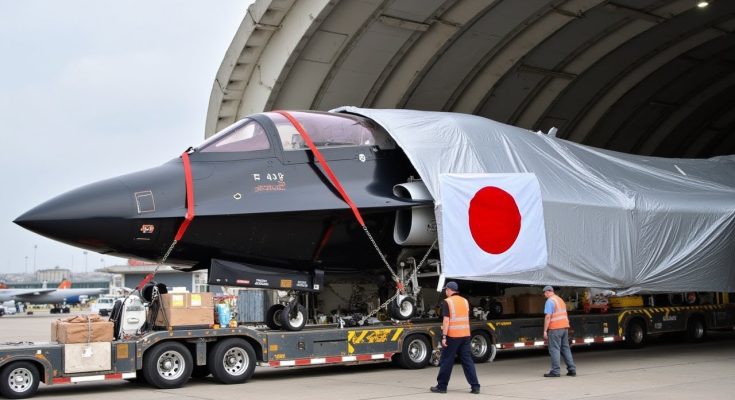Japan’s new 6th generation UFO fighter jet has taken the aviation world by storm, ushering in a new era of military aviation. This cutting-edge aircraft, which combines advanced technology, futuristic design, and unparalleled capabilities, has left experts and military enthusiasts alike in awe. Designed to push the boundaries of what’s possible in aviation, the fighter jet promises to revolutionize aerial combat and could reshape global defense strategies.
A Leap Forward in Aviation
The Japanese 6th-generation fighter jet, which has yet to be officially named, represents a significant leap forward from the current generation of military aircraft. It marks a break from conventional design principles, introducing groundbreaking innovations that seem to defy traditional aviation logic. One of the most jaw-dropping features of this jet is its resemblance to a “UFO” or unidentified flying object, with sleek, unconventional shapes and features that suggest the aircraft could be capable of flight characteristics not previously seen in any known jet.
While the jet still retains some characteristics of traditional fighters — such as stealth capabilities and super maneuverability — it integrates cutting-edge technologies that go far beyond anything currently available. The jet is reportedly designed to incorporate artificial intelligence (AI) that will allow it to adapt and respond to battlefield conditions in real-time, making split-second decisions with far greater efficiency than a human pilot could. This AI could assist in everything from combat tactics to navigation, enhancing the jet’s operational capabilities.
Key Features
- Stealth and Shape-shifting Design: One of the standout features of Japan’s new fighter jet is its radical design. The aircraft features a sleek, angular shape reminiscent of UFO sightings, with smooth curves and stealth technology that reduce its radar signature to near zero. This advanced design allows it to remain undetected by enemy radar, providing a significant tactical advantage in combat.
- Advanced Propulsion System: The jet is rumored to be powered by an advanced propulsion system, possibly including hybrid electric or plasma-based engines. This would allow it to achieve unparalleled speed, range, and agility. Such propulsion technology could drastically reduce fuel consumption while increasing thrust, making the aircraft both fast and highly efficient.
- Hypersonic Speed: Speculation has also arisen that Japan’s 6th-generation fighter jet could be capable of hypersonic flight, meaning it could travel at speeds exceeding Mach 5 (about 3,800 miles per hour or 6,100 km/h). Hypersonic capabilities would make the aircraft an incredibly formidable force, capable of outpacing nearly any missile or fighter jet in service today.
- Autonomous Capabilities: Another groundbreaking feature is the potential for highly autonomous flight. The jet’s AI could allow for advanced autonomous combat missions, reducing the need for direct human intervention. This could also open the door to drone-like capabilities, where multiple aircraft could work in coordination without direct pilot control.
- Energy Weapon Integration: There are even rumors that Japan’s 6th-generation jet may integrate directed-energy weapons, such as lasers, for both offensive and defensive measures. These energy weapons would allow the jet to destroy incoming missiles or drones with pinpoint precision, adding a futuristic layer to its already impressive arsenal.
Impact on Global Defense
Japan’s new fighter jet could have profound implications for global defense and military aviation. With its advanced capabilities, it could force nations to rethink their strategies and accelerate their own research into next-generation aircraft. Countries with sophisticated aerospace programs, such as the United States, Russia, and China, may now be pushed to fast-track their own 6th-generation fighter jet projects.
In the long run, this new jet could also shift the balance of power in the Pacific region, especially considering Japan’s position as a key player in the region’s defense. The country’s technological advancements in aviation could significantly enhance its military posture, ensuring that Japan remains at the forefront of global aviation innovation.
Conclusion
Japan’s 6th-generation UFO fighter jet has stunned the aviation world with its innovative design, advanced technologies, and unprecedented capabilities. As the aircraft moves closer to production, the global military community will be watching closely to see how this technological marvel performs in real-world combat scenarios. If Japan’s new jet lives up to the hype, it could change the face of aerial warfare for decades to come.



